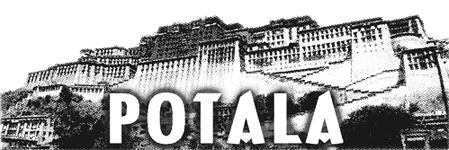Beginning his study of Buddhism in the Gadhan Dhechenling Monastery, in Tibet, Venerable Samdhong Rinpoche, came to India in 1959, at the age of 20. He headed the Central Tibetan Administration, Dharamsala, for two terms. A highly regarded scholar of Buddhism, he has held many important positions with academic and administrative responsibilities. A few of them: Member General Body Indian Council of Philosophical Research; member, Governing Council, Asiatic Society, Kolkata; member of the National Advisory Committee for Buddhist Studies; President, Association of Indian Universities; President, Coomaraswamy Centre for Traditional Studies, Lucknow; member, Association of Commonwealth Universities. Member, Governing Body, Krishnamurti Foundation of India, Chennai; member, Expert Advisory Committee, Ministry of Culture, Government of India.
Venerable Samdhong Rinpoche was in Chennai for a short visit. The following are excerpts from an interview with him:
What are the distinctive features of Tibetan Buddhism?
First of all, there is no such thing as Tibetan Buddhism. It is an expression, which Western scholars use, and I do not know why they do. Do you talk of British Christianity or American Christianity? There are different schools of philosophy in Buddhism like Mahayana, Hinayana, etc. But Buddhism is not divided by geography. If at all there is any country to which Buddhism belongs, that is India, because Buddha was born here. It is Indians who can take pride in Buddhism, because it originated here.
I stand corrected. Let me rephrase the question. What is special about Buddhism in Tibet?
Buddhism in Tibet is a complete tradition. Educational centres such as Nalanda, Taxila, Bodhgaya and Sarnath produced Buddhist canonical literature. All of this was translated into the Tibetan language.
How big is this collection of Tibetan works?
We have a compilation of 108 volumes of Buddha’s teachings. It includes 3,000 titles. Woodblock techniques have been used to preserve the ancient Tibetan texts. We also have 223 volumes of commentaries of Indian scholars, which include 4,000 titles. The topics range from Mahayana and Hinayana to Ayurveda, dharma and literature.
Prof. Hahn’s dissertation was on Vrttamalastuti, where each stanza illustrated a different Sanskrit meter. It was a text that was preserved only in a Tibetan translation. And this kindled Hahn’s interest in recovering the Sanskrit literature of Buddhism from Tibetan translations. So, would it be correct to say that Tibetan translations have helped preserve the Buddhist tradition, because of the possibility of re-translations from Tibetan to Sanskrit?
Certainly. Tibetan translations are the most accurate, and the Tibetan collection is also the largest available translation of Buddhist texts. The original texts, which were in Sanskrit were lost when Nalanda University was destroyed. Mahayana texts were in Sanskrit, whereas Hinayana texts were mostly in Prakrit. In Tibet, Mahayana school is followed. So, if we want the original Sanskrit texts about Mahayana, we can now work backwards from Tibetan to Sanskrit. So, in that way the Tibetan translations help us to get back the basic Sanskrit texts.
Hahn was a close friend of mine. But even before Hahn, there were other European scholars who took an interest in Buddhist literature which had been translated to Tibetan. The Italian scholar Tucci, for instance. Tibet enjoys an unbroken lineage of Buddhism, and before the days of Communism, Buddhists from Russia and Mongolia came to Tibet, and studied Buddhist teachings preserved in the Tibetan language.
You talk about Mahayana texts in Sanskrit. What about the commentaries? Were they also in Sanskrit?
Yes, but Buddhist Sanskrit is a hybrid Sanskrit. It is a mixture of Sanskrit, Prakrit, Apabrahmsa, etc. Paninian sutras were not strictly followed.
Why was it a hybrid?
Because the Buddha spoke in a simple language. He wanted his teachings to reach the masses. So, he spoke a language that was easy to understand.
And what about efforts at translation now? Are they continuing?
A lot of translation work has been going on in the Central Institute of Higher Tibetan studies in Sarnath, Varanasi. It is a deemed University. I was associated with the institute for 30 years, first as Principal and then director. One hundred Tibetan Buddhist texts have been translated to Sanskrit by the scholars in this University.
Where can we find the largest collection of Tibetan texts?
In the Library of Congress in the U.S.
And in India?
The Institute of Tibetology in Sikkim, the library in Dharamsala, in Sarnath and the Central Institute of Buddhist studies in Leh, Ladakh.
What is the Tibetan way of ordination for monks?
In bikshu ordination mulsarvastivadin school is followed in Tibet.
Does Buddhism in Tibet follow Tantric traditions?
Wherever Mahayana is followed, there is a tantric tradition. So, this is not unique to Tibet.
Does Buddhist art vary according to the school of philosophy followed?
If you observe minutely, there might be some differences. But by and large, art is just an expression of imagination. So, there are only a few minor variations. But mandala constructions are found only in art based on Vajrayana, which is a part of Mahayana.


